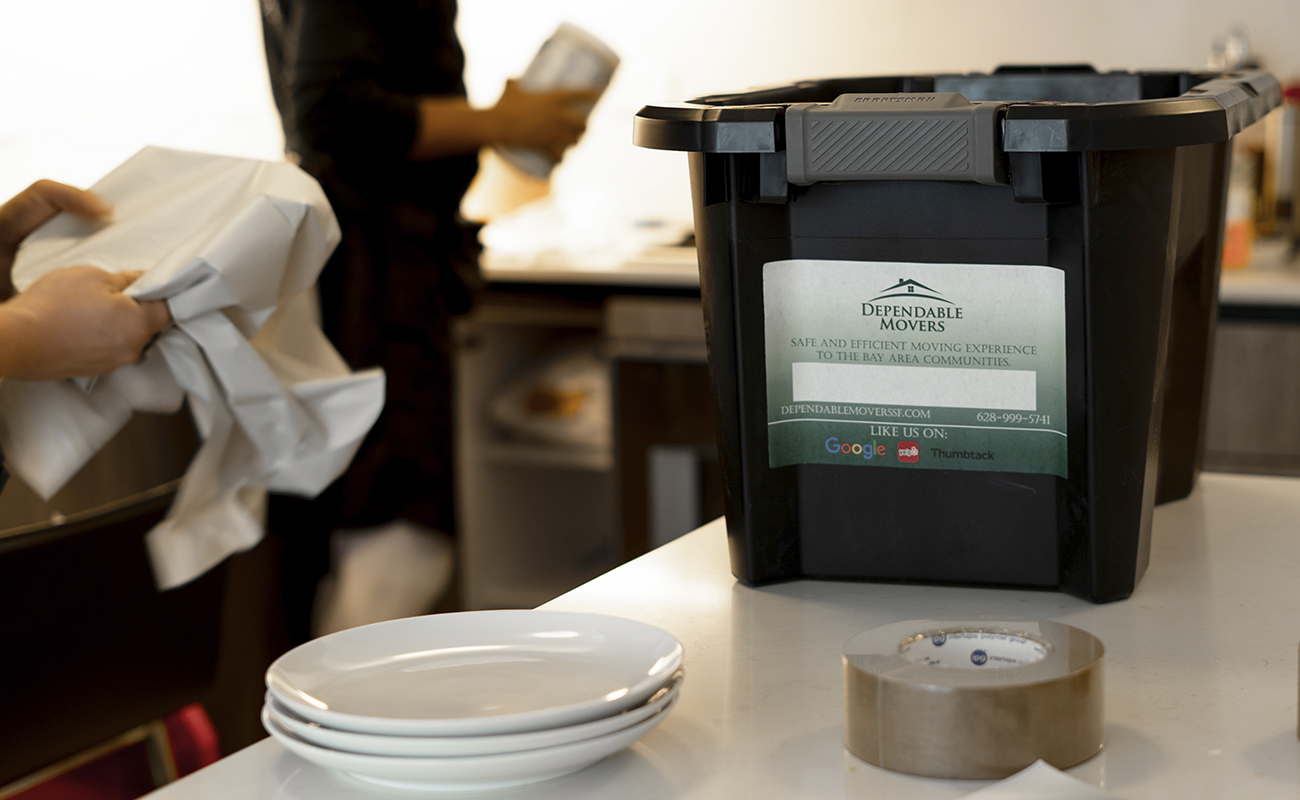
Facing a move in San Francisco but aren’t quite sure how to pack up all your small kitchen appliances? We get it: the packing process is the most dreaded part of moving for many people. Of all the rooms in your home that you have to organize before a move, the kitchen is by far the trickiest and most time-consuming.
Packing your kitchen takes a detailed game plan and lots of supplies, especially if you have a lot of small appliances such as blenders, toasters, air fryers, microwaves, and stand mixers. Yes, small appliances do require TLC, but they’re not all that tough to pack. You just need the right supplies and plan about how you will pack them safely for transport.
Here are some tips that should help you with packing up all those small kitchen appliances, including:
- Toasters/toaster ovens
- Blenders, food processors
- Bread makers
- Microwaves
- Air fryers
- Pressure cookers
- Stand mixers
- Rice cookers
- Coffee makers, espresso machines
Supplies
Take the time to gather the proper supplies for your kitchen packing job.
- Boxes:You’re best off packing small appliances in boxes that fit as closely in size to the actual appliance as possible. In fact, if you still have the original box for the appliance, use that.
- Packing paper: This will help you wrap up your appliances, plus it will help fill in any gaps remaining in the boxes. If you have dish towels and run out of packing paper, these will work just as well.
- Packing tape: You need tape to keep all the wrapping in place and to seal the boxes.
- Twist ties: These will be used for securing cords.
- Permanent marker: Use these to label each box with the name of the appliance inside. It’s also a good idea to mark it as fragile.
6 Steps to Packing Small Appliances
1. Clean Them
Thoroughly clean and dry each of your small appliances before packing, which will prevent you from transporting crumbs, grease, and other debris to the new home, points out Moving.com.
2. Remove Loose or Removable Parts
Disassemble each appliance if you can instead of packing them in one piece. These parts, such as microwave trays and food processor blades, must be packed carefully and separately. Place those pieces next to the appliance they belong to, then wrap everything up together so nothing gets separated.
3. Find an Appropriate Size Box
Small to medium sized boxes are best. Again, try to use the original box and packaging. If not, a standard moving box will do. Don’t put many small appliances together in one big box, as they could damage each other in transport.
4. Wrap Appliances
Bundle up loose cords and secure them with twist ties, then use packing tape to adhere them to the appliance’s side. In the case of toaster ovens or microwave ovens, secure it with packing tape so the door doesn’t swing open during transport.
5. Box Them Up
Line the box with packing paper or towels for extra cushion, before placing a wrapped appliance in any given box. Place both the appliance and its associated components inside, filling all gaps to prevent shifting. If you find yourself with a large amount of leftover space, this is where you can place smaller, less fragile kitchen items, such as gadgets and doo dads from your junk drawer. Keep like things together, secure them in plastic baggies, and be sure to label everything. Cushion those extra items with paper or towels as well before sealing the box.
You can also fill thosesmall pockets of space with packing peanuts, says The Spruce. You may also want to add small pots, pans or other non-breakable items. But always add paper to any unwrapped items so nothing gets scratched or stained. Frying pans can easily mark up nice, shiny plastic appliances, so take extra care.
6. Seal and Label
Seal and label the boxes so you know what’s in there and can easily unpack it all in the new place. Mark them as fragile so you and the movers will both take special care with them while unloading and loading.
Now you’re done! All you have to worry about now is the unloading and unpacking process. But that’s another blog for another day!
Contact Dependable Movers
If you need help with your upcoming San Francisco move, contact usat 628-999-5741 for a free estimate. We would be happy to help you with our experienced packing and moving services.
FAQs
The best way to pack small kitchen appliances is to first clean and disassemble them, then wrap each part in bubble wrap or packing paper. Place them in sturdy boxes with plenty of cushioning to avoid damage during transport.
To protect small kitchen appliances, use padding materials like bubble wrap or foam and ensure there is no empty space in the box where items could shift. Labeling the boxes as fragile also helps ensure careful handling.
Yes, keeping the original boxes is ideal because they are designed to fit the appliance and provide the best protection. If the original boxes are unavailable, use sturdy, appropriately sized boxes and fill any gaps with packing material.